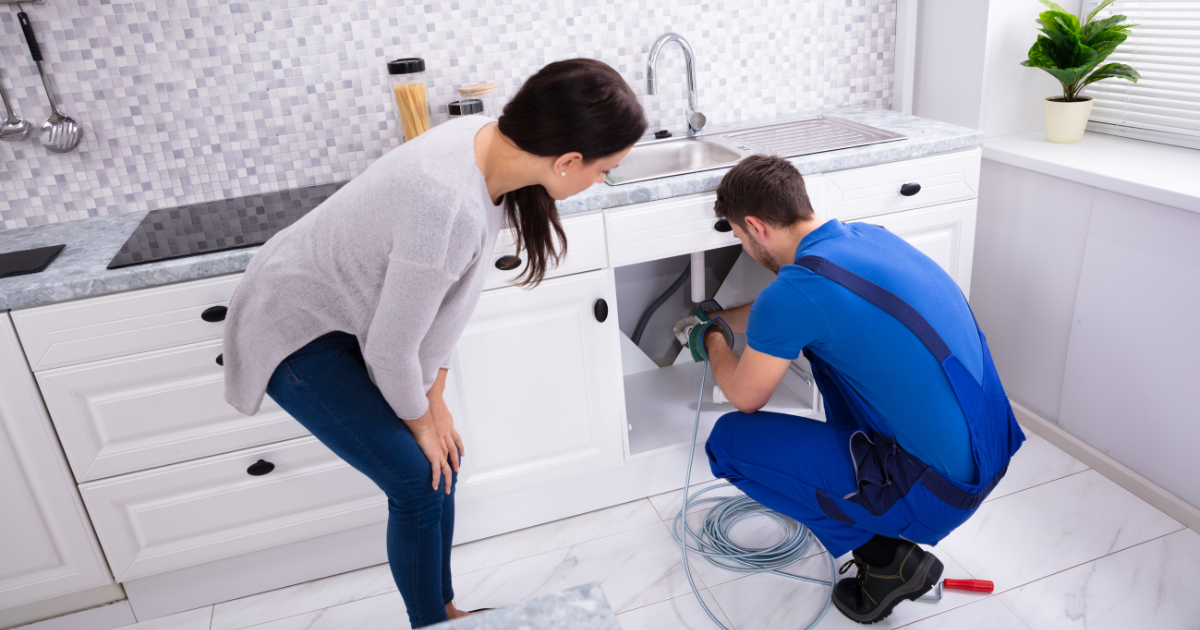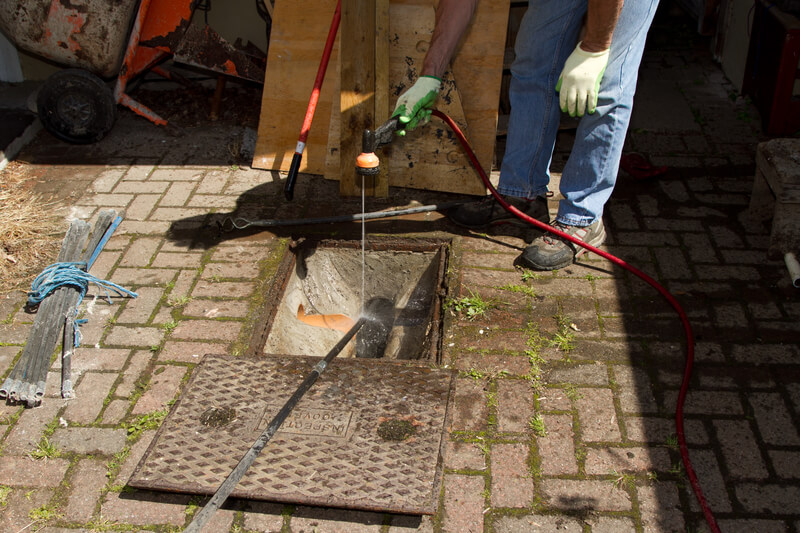What to Address a Blocked Drain Independently Prior to Engaging Plumbing Professionals
What to Address a Blocked Drain Independently Prior to Engaging Plumbing Professionals
Blog Article
They are making several good annotation related to Tips for Dealing with Clogged Drains and Sewer Lines as a whole in the content down the page.

Introduction
Taking care of a blocked drainpipe can be an irritating experience, interfering with everyday activities and possibly creating damages to your home. Nonetheless, prior to reaching out to plumbing professionals, there are actions you can require to deal with the issue yourself. In this overview, we'll check out DIY services and preventive measures to take on an obstructed drain efficiently.
Determining the Problem
The very first step in attending to an obstructed drainpipe is acknowledging the indications. Slow-moving drainage, gurgling audios, foul odors rising from drains pipes, or water backing up prevail indicators of a blocked drain. Determining these indicators early can assist protect against even more difficulties.
Selecting the Right Plumbing Service
When picking a pipes service, take into consideration elements such as experience, licensing, and consumer evaluations. Choose a reliable plumbing with a track record of quality craftsmanship and transparent rates methods.
Expense Factors to consider
The price of professional drain cleaning company can differ relying on the severity of the blockage and the plumbing's rates. Request quotes from numerous suppliers and inquire about any type of service charges to ensure transparency and stay clear of shocks.
Safety Measures
When trying DIY drain cleansing, prioritize safety and security. Wear protective gloves and glasses to avoid contact with harmful chemicals or germs. Never mix different drainpipe cleaning products, as this can create unsafe fumes.
Instance Studies
Real-life examples highlight the performance of DIY remedies and the importance of timely expert treatment in settling drainpipe clogs.
Typical Root Causes Of Blocked Drainpipes
Understanding the aspects that contribute to drain obstructions is essential for effective resolution. Usual offenders include hair, soap residue, oil, food debris, and international things like sanitary items or paper towels. Tree roots invading below ground pipelines can likewise create considerable clogs.
DIY Solutions
For small blockages, a number of DIY options can be efficient. Pouring boiling thin down the drainpipe can assist dissolve grease and particles. Sodium bicarbonate and vinegar or a mixture of salt and cooking soda can function as natural cleansers. Utilizing a bettor or pipes snake to dislodge blockages is an additional alternative.
Devices and Devices
Having the right devices handy can make DIY drain cleaning up a lot more reliable. A bettor is a functional device for clearing obstructions in sinks, toilets, and showers. A pipes snake or auger can reach deeper obstructions, while drainpipe cleaning chemicals can be used cautiously for persistent clogs.
Preventive Measures
To avoid future obstructions, adopting safety nets is important. Install drain guards or strainers to catch hair and debris before they get in the pipelines. Regularly flush drains with hot water to dissolve oil buildup, and avoid getting rid of grease or strong waste away.
When to Call a Specialist
While do it yourself options can fix small clogs, specific signs suggest the need for expert support. Persistent blockages, foul odors regardless of cleaning up efforts, or multiple drains supporting all at once are red flags that require experienced intervention.
Conclusion
By following the tips described in this overview, you can effectively deal with obstructed drains and protect against future pipes issues. Whether choosing do it yourself options or looking for professional help, timely action is essential to preserving a healthy plumbing system and maintaining the honesty of your home.
How to Clear a Clogged Drain Yourself (And When to Call In the Professionals)
What Can Clog a Drain
Dirt Skin flakes Hair Grease Soap scum Food Offset pipes Tree roots Small objects Mineral buildup DIY Tricks to Unclog a Drain
You can fix this! Once you have identified the source of the clog (or have a vague idea), you can try one or a combination of these fixes in order to clear your plumbing.
Wire Hanger or Snake
Untangle and clear out hair from a drainpipe with a homemade snake. Use a straightened-out wire hanger with a 90-degree angle hook to locate the clog and drag out any unwanted material.
Remember not to push the clog further down to where the wire hanger cannot reach! If you need to follow up with a plunger, give it a try. Your efforts might be more successful after it’s been wire-snaked.
If you want to get fancy and don’t have a wire hanger to spare, head to the store and pick up a hand-operated drain snake. You can get one for $10-$30. It may save you the hassle, and provide additional length to reach deep into the clogged pipe.
Plunger
A cup plunger has a suction cup attached to a wooden handle. The rubber creates a seal around the drain, and increases the pressure force of the plunger.
Plunge for 30-second increments to loosen the clog. This may need to be repeated over the course of 15-20 minutes. Once plunged, run the water to flush the remaining material out of the drain.
Remember– never use a plunger if you have used a chemical drain cleaner. These chemicals can splash up from the force of the plunger and cause serious injury or burns.
Boiling Water
Hot water can sometimes break up materials into a flushable amount. Dirt, grease, and soap buildup requires heat in order to unstick from surfaces.
Take your kitchen kettle and heat your water to a boil. Once it reaches a rolling boil, pour it directly down the drain into the blockage. Carefully follow with plunging, if necessary.
Don’t worry if this takes more than one try! It can often take multiple kettles and repeated plunging in order to clear a particularly stubborn clog.
Chemical Drain Cleaner
As a last resort, pick up a bottle of chemical drain cleaner. Drain-cleaning chemicals are potent, and not very good for the environment.
You may need to wear protective eyewear in gloves before handling your bottle of chemical drain cleaner. Follow the instructions printed on the bottle, and flush with water as soon as the instructions allow. Do not follow with plunging.
Baking Soda and Vinegar
As a safer alternative to chemical drain cleaner, baking soda and vinegar can create a chemical reaction that clears tough clogs.
Combine one cup of cleaning vinegar with one cup of boiling water, and set aside. Once you have done this, pour half a cup of baking soda down the drain. Give the baking thirty seconds to settle and cover a large portion of the problem drain.
Following the baking soda, pour down your vinegar and hot water solution. Once the vinegar and baking soda combine, the mixture will bubble and fix. Let this reaction fizzle in the drain for about an hour.
After an hour, follow with a kettle’s worth of hot water. The heat and liquid should flush out any remaining material.
When to Call a Plumber
If your DIY attempts haven’t cleared your clog drain, it’s time to call in a professional. It’s not worth losing access to your kitchen sink or high-traffic bathroom. A clog in a vital area can keep you from the things you’d rather be doing, and derail your routine.
Anytime a clog is causing water to spread is a time to call in a plumbing service. What starts out as a little bit of water can quickly grow into serious, expensive water damage.
Additionally, a serious clog can result in burst pipes or serious leaks. Make sure you know when to take it seriously!
https://myguysnow.com/how-to-clear-a-clogged-drain-yourself-and-when-to-call-in-the-professionals/

I hope you enjoyed our section on Tips for Dealing with Clogged Drains and Sewer Lines. Many thanks for taking time to read our piece of content. Enjoyed our blog entry? Please share it. Help other people discover it. Thanks a bunch for your time. Come back soon.
Call Today Report this page